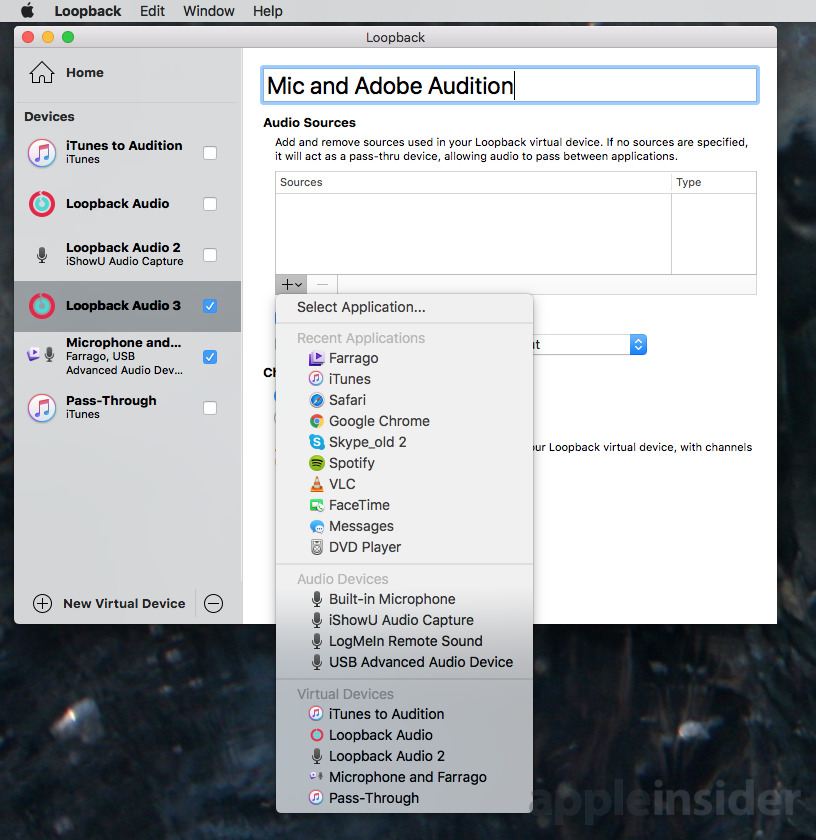

In Record 1.5 you can normalize and reverse your recorded audio clips.
#Reason audio loopback mac
Reason 5 and Record 1.5 comes with a new and better built-in help system, on both Mac and Windows. The four new CV inputs can be used to control any parameter on the contained devices, providing even more options and possibilities for sound designers. The Combinator in Reason 5 is expanded with new CV inputs on the back. Hierarchical menus in Combinator programmerĪ sound designer favorite, the Combinator's programmer window is now even easier to use with hierarchical menus for fast patching. The new key commands lets you control play, loop, record and more from your keyboard. Reason 5 and Record 1.5 works even better on your laptop – or any keyboard missing a numeric pad.

New in the transport panel is the Tap Tempo button. Use the new Remote parameters for real-time control of the loop points from your MIDI controller. Select a clip and press L to immediately set the loop points to the selection. Use it to mute sections, or create variations in your Blocks. The new Mute tool lets you click to mute and unmute clips. Now you can stretch loops to match your song's tempo, or expand samples to eight times the length for completely new sounds. Or use two keyboards on stage for controlling different Reason instruments.īy pressing the alt or option key, Record 1.5 lets you timestretch individual clips. Lock a 16-pad controller to a Kong, and use a keyboard to play your synths. Reason 5 and Record 1.5 lets you use multiple MIDI keyboards, pads, and controllers for playing and recording your instruments. Reason 5's self-contained song format makes collaborating with your friends a breeze. Make your songs self-contained by embedding samples and even ReFill sounds in your file.
#Reason audio loopback driver
The driver will be responsible for looping the audio, not the audio interface, so there will be extra load on the CPU, but since the audio data are passed unaltered, the performance penalty should be fairly gentle.- Automatic Self-Contain of Samples (incl from ReFills)
#Reason audio loopback software
The drawback to this method is no hardware FX can be applied (since the audio never reach the interface), and you can't mix two software outputs and send it to the third software. You can't in anyway alter the audio though, just let the driver copy audio data between virtual IOs. In addition to the good old Totalmix mixer view and matrix view, add a new loopback view, where we can control which virtual output goes to which virtual input. Forget extra mixes which require additional processing, the audio data do not need to be passed to the hardware at all. If this is too much to ask, here is a much easier walk around. However this also means we'll need an extra row in totalmix, and a much more powerful DSP in the audio interface to handle those extra mixes. That means the input and output devices reported to the operating system are the virtual ones that do not necessarily correspond to the hardware IOs, The patching can be done within the totalmix, so looping software A's output to software B's input only occupies available virtual IOs. Having said that, the best and most elegant way to solve software loopbacks taking up physical IOs is to separate software IOs and Hardware IOs in the driver level. Your ADAT ports can then be freed up and available to other purposes. Totalmix FX has loopback feature built-in which requires no physical cables and with lower latency.


 0 kommentar(er)
0 kommentar(er)
